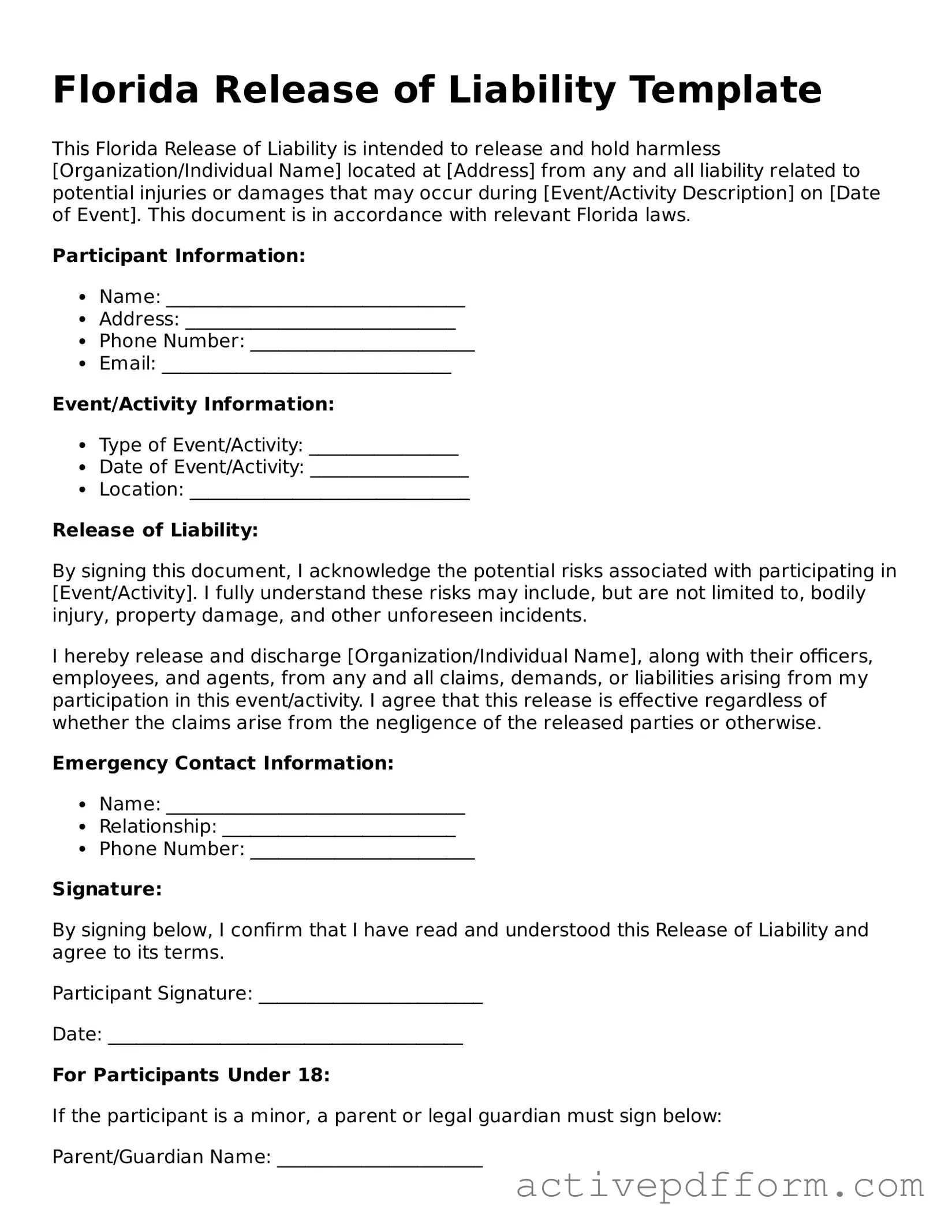What is a Florida Release of Liability form?
A Florida Release of Liability form is a legal document that protects one party from being held liable for any injuries or damages that may occur during an activity or event. It is often used in situations involving recreational activities, sports, or other events where there is a risk of injury. By signing this form, participants acknowledge the risks involved and agree not to hold the organizer responsible for any accidents that may happen.
Who should use a Release of Liability form?
This form is commonly used by businesses, organizations, or individuals who host events or activities that could potentially lead to injury. Examples include sports leagues, gyms, adventure parks, and event organizers. It is essential for anyone offering an activity that carries inherent risks to have participants sign this form to mitigate potential legal claims.
Is a Release of Liability form legally binding in Florida?
Yes, a properly drafted Release of Liability form can be legally binding in Florida. However, certain conditions must be met for the form to be enforceable. The language must be clear, and participants should voluntarily sign the form without coercion. Additionally, the form should not release a party from liability for gross negligence or willful misconduct.
What information should be included in the form?
A comprehensive Release of Liability form should include the names of the parties involved, a detailed description of the activity, an acknowledgment of the risks, and a statement that the participant agrees to release the organizer from liability. It should also include a section for the participant's signature and date. If the participant is a minor, a parent or guardian must sign on their behalf.
Can a minor sign a Release of Liability form?
Minors cannot legally sign contracts, including Release of Liability forms, on their own. Therefore, a parent or legal guardian must sign the form for a minor participant. This signature serves as consent and acknowledges that the guardian understands the risks involved in the activity.
What happens if someone gets injured despite signing the form?
While a Release of Liability form can help protect the organizer from legal claims, it does not guarantee immunity from all lawsuits. If an injury occurs, the specific circumstances surrounding the incident will be examined. If negligence or willful misconduct is proven, the form may not be enforceable, and the injured party could still pursue legal action.
How can I ensure my Release of Liability form is valid?
To ensure the validity of your Release of Liability form, consider having it reviewed by a legal professional. Use clear and straightforward language, avoid ambiguous terms, and make sure all parties understand the document before signing. Additionally, ensure that the form is signed voluntarily and without pressure.
Can I modify a standard Release of Liability form?
Yes, you can modify a standard Release of Liability form to better suit your specific activity or event. However, any modifications should still comply with legal standards and clearly outline the risks associated with the activity. It is advisable to consult with a legal expert to ensure that any changes do not compromise the form's enforceability.
Where can I find a Florida Release of Liability form?
You can find templates for Florida Release of Liability forms through various online legal document services, local legal offices, or by consulting with a lawyer. Ensure that the template you choose is appropriate for your specific needs and complies with Florida laws.
